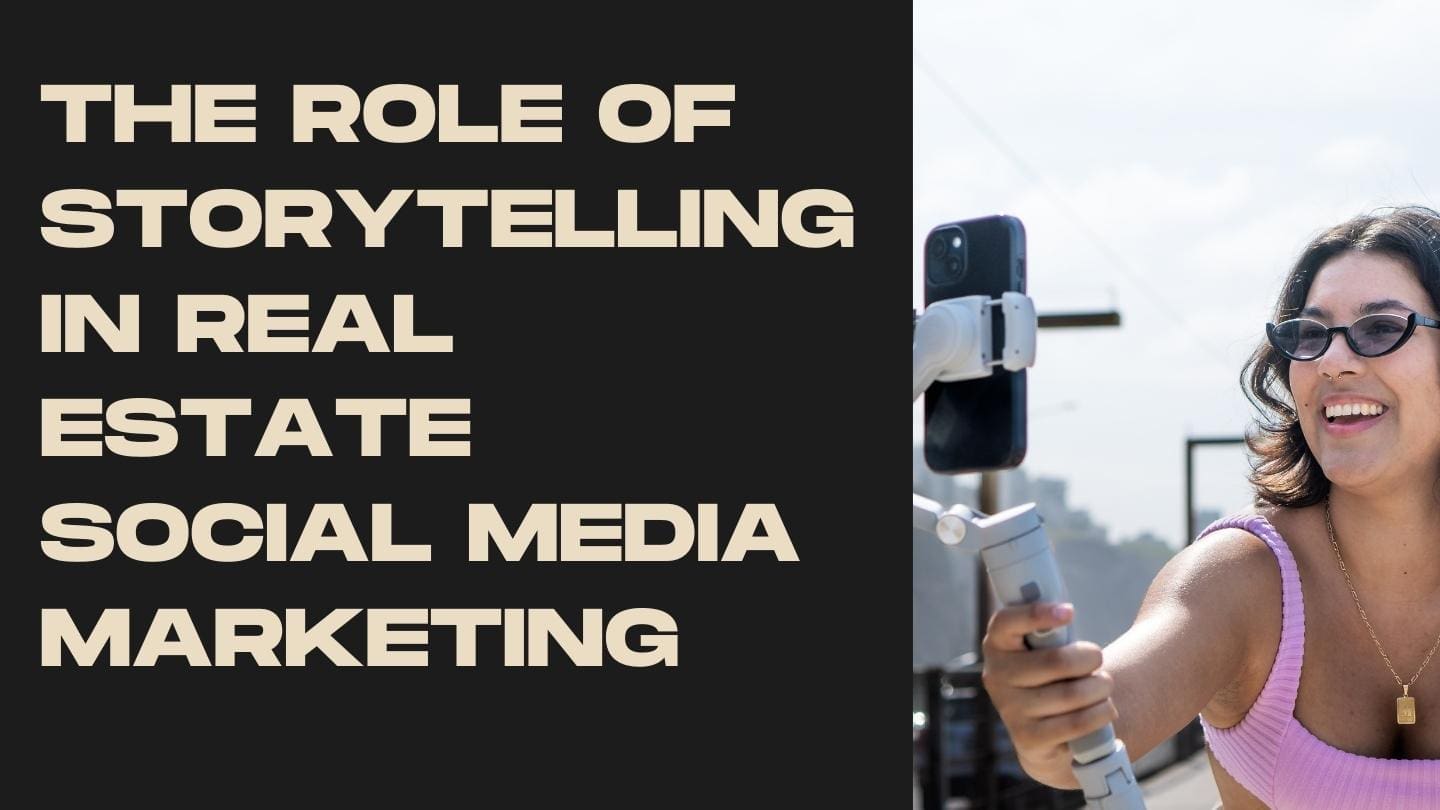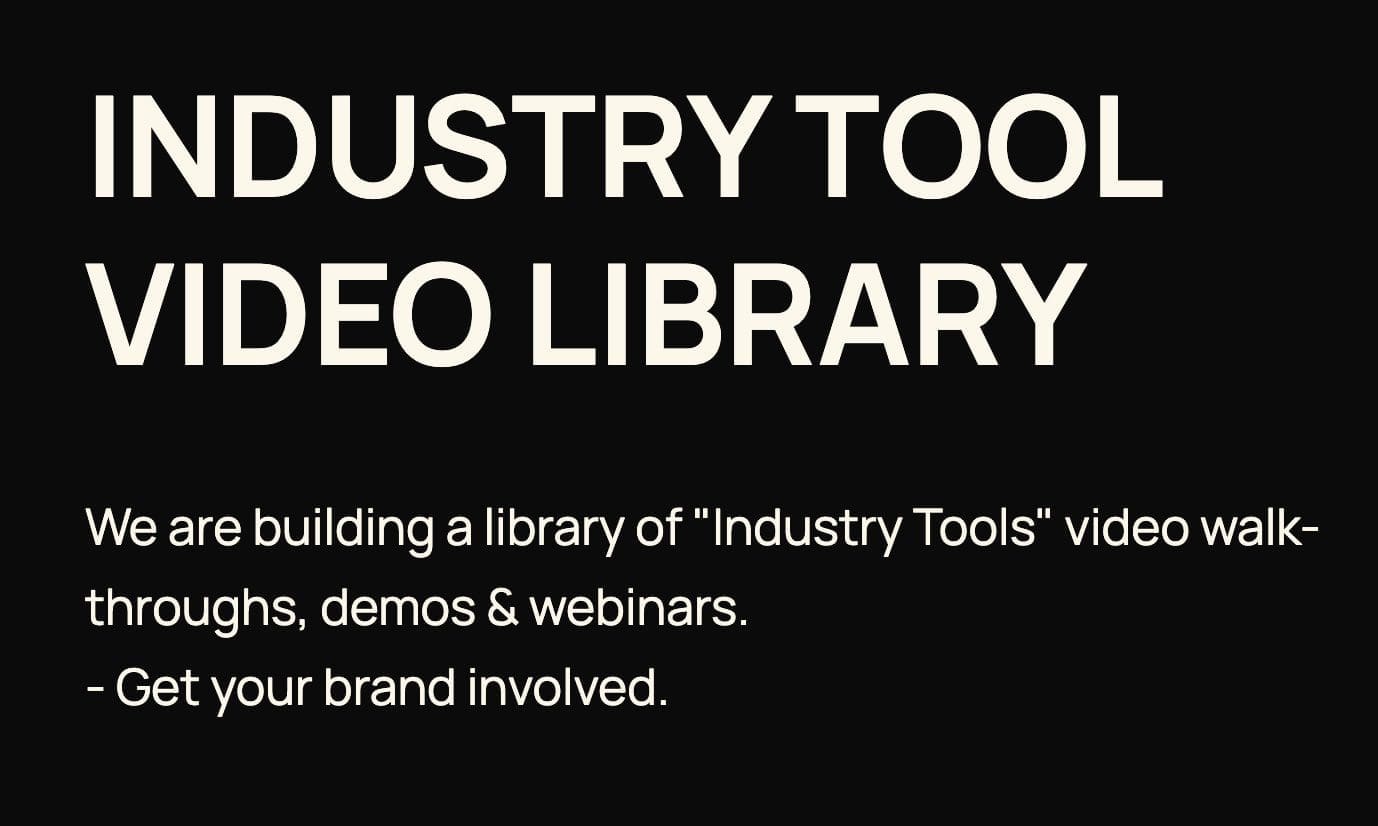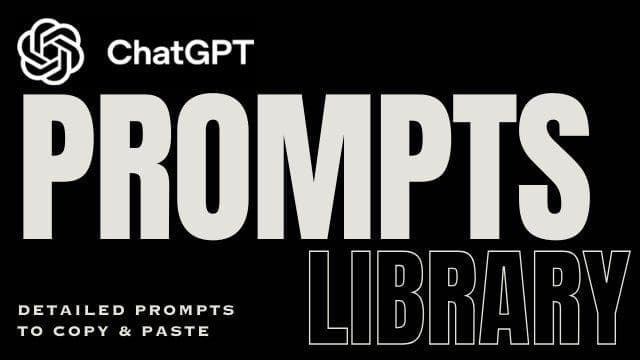AI Learning Centres:
- AI – Learn The Basics
- Get The Most From ChatGPT
- Branding in The Age of AI
- AI for Client Experience
- AI For Prospecting
- AI For Marketing
- AI For Listings & Ads
- Team Adoption of AI
- AI For PM
- AIO & Generative Search
- AI For Operations & Efficiency
- AI For Market Research & Analysis
- AI Ethics, Privacy & Compliance in Real Estate
Digital Marketing & Social Media Learning Centres:
Guides & Downloads

The Role of Storytelling in Real Estate Social Media Marketing
Storytelling turns your posts into moments people remember. A good story helps a buyer feel at home before they even step through the door. It helps a seller feel proud and cared for. It helps your community see you as a trusted guide. In a noisy feed, stories make people stop, feel, and act.
This guide shows how to use simple stories to win attention, build trust, and start real conversations that lead to appraisals and sales.
Why Stories Work On Social Media
People remember feelings more than facts. A property has features. A story gives those features meaning.
Stories create emotion. Emotion drives action and sharing.
Stories are easy to remember and retell.
Stories build trust. People feel they know you.
Stories give context to data and photos. Numbers become real life.
What Makes A Story
Every strong story has five parts. Keep it simple and short.
Character. Who is the person or place we follow. Buyer, seller, tenant, landlord, or the home itself.
Setting. Where and when. The street, the suburb, the season, the time of day.
Problem. What was hard. Low space, tight timeline, upsizing, downsizing.
Action. What steps were taken. Prep, styling, marketing, open homes, negotiations.
Result. What changed. Sold above reserve, stress eased, new chapter begun, local move complete.
The Core Story Types You Can Use
Pick the type that fits your post and goal. Rotate them each week so your feed feels fresh.
The Seller Journey. From first call to sold. Focus on calm steps, clear advice, and the final result.
The Buyer Journey. From search to keys. Share how you matched needs, solved hurdles, and celebrated settlement.
The Home Transformation. Before and after. Show small fixes that made a big lift. Paint, light, gardens, styling.
The Suburb Story. Why locals love it. Parks, schools, cafes, commute, weekend spots.
The Community Story. A local business or event. Shine a light on others to show you care.
The Behind The Scenes Story. Open home prep, new listing walk through, auction day rhythm.
The Micro Moment. One photo, one lesson, one change. A short scene with a clear takeaway.
The Data To Story. Turn stats into a simple plot. What the change means for a family on this street.
A Simple Framework You Can Use Every Time
Use the Five C method. It keeps you clear and quick.
Character. Who is this about.
Challenge. What was in the way.
Choice. What plan did you choose together.
Change. What improved.
Call To Action. What should the viewer do now.
Example in a caption
Character. Young family in North Shore.
Challenge. Needed a yard and stayed close to school.
Choice. Off market search and a weekday preview.
Change. Found the right home and sold their unit in two weeks.
Call To Action. Want help with a smooth move. Send me a message.
How To Plan Your Story Content For The Week
Use this simple map. Repeat it each week with new homes and people.
Monday. Suburb Story. A friendly 30 second video at a landmark.
Tuesday. Home Transformation. Three photos with one tip in the caption.
Wednesday. Seller Journey. A carousel post that shows the steps from appraisal to sold.
Thursday. Buyer Journey. A Reel of short clips that ends with keys in hand.
Friday. Community Story. A shout out to a local cafe or school fundraiser.
Saturday. Behind The Scenes. Auction or open home moments with a voiceover.
Sunday. Data To Story. One chart turned into one sentence and one action step.
How To Capture A Great Property Story
Use this shot list for a new listing. Keep clips short. Five seconds is enough.
Street arrival. Slow walk toward the front door.
First look moment. Wide shot of the main living area.
Light and life. Windows, trees moving, pets in the yard with consent.
Smart features. Storage, study nook, laundry flow, garage space.
Outside feel. Garden path, deck, sunset sky, morning light.
Nearby love. Park gate, coffee pickup, school crossing, bus stop.
Voiceover. Who is this home perfect for and why.
Ending. Address on screen and simple invite to book a viewing.
Writing Captions That Carry The Story
Use short words and short lines. Put the feeling first. End with a clear action.
Hook ideas
A busy week turned into a calm sale
Keys, smiles, and a five minute walk to school
One tidy up that added real valueMiddle lines
What they needed
What almost went wrong
What we focused on
What changedClose
Want a plan like this for your place. Send me a message.
Thinking of moving soon. Ask for my free prep checklist.
Curious what buyers love in this pocket. Comment suburb and I will share.
Turning One Story Into Many Posts
Stretch every story across formats and channels.
Long caption on Facebook or LinkedIn.
Short Reel on Instagram or TikTok.
Three image carousel with steps and results.
Story stickers. Poll, quiz, question box about the home or suburb.
One minute voiceover for YouTube Shorts.
Email snippet that links to the full post.
Blog summary on your site with the same photos.
Prompts You Can Use To Shape A Story With AI
Copy and paste one of these into your favourite AI tool. Fill the brackets.
Turn these dot points into a friendly story for social media. Character is [seller type]. Challenge was [challenge]. Steps were [steps]. Result was [result]. Tone is warm and simple. Add a one line call to action.
Write a 45 second voiceover for a property Reel at [address]. Audience is [buyer type]. Focus on three benefits and one feeling. End with an invite to book a viewing.
Turn these suburb facts into a short story. Suburb is [name]. Best bits are [list]. Add a simple opening hook and a closing question to spark comments.
Rewrite this market stat as a buyer story. Stat is [number]. Explain what it means for a first home buyer in [suburb]. Keep it under 90 words.
Building Your Story Bank
A story bank saves time. Add new notes after each appointment and event.
Seller wins. Appraisal to sold moments, short quotes, special challenges.
Buyer wins. Search solved, home found, settlement day smiles.
Prep tips that worked. Low cost fixes, fast wins, trade contacts.
Local legends. Shop owners, teachers, club volunteers.
Suburb snaps. Landmarks, secret parks, sunrise and sunset views.
Numbers with meaning. Days on market, buyer groups, price bands.
Personal moments. Why you love this work, lessons learned this week.
Keep a folder for photos and clips. Name files by date, street, and theme. Use the same names on all platforms so you can find and reuse.
Staying Safe And Professional
Stories must be true, kind, and lawful. Protect your clients and your brand.
Always get written consent before sharing faces or names.
Do not share private details about a person or a property.
Be clear with price guides and results. No claims that could mislead.
Use your own photos and videos or get permission.
If children appear, get parent consent in writing.
Keep records of approvals inside your listing file.
How To Measure Story Success
Watch the signals that show people care and want more.
Views. Shows reach. Aim for steady growth each month.
Watch time and completion. Shows how engaging the story is.
Saves. Shows people found value and want to revisit.
Shares. Shows it struck a chord with groups and friends.
Comments and DMs. Shows trust and starts real chats.
Profile visits and link clicks. Shows intent to work with you.
Appraisal requests and open home bookings. Shows business impact.
Pick two lead indicators and two lag indicators to keep focus. For example, saves and DMs as leads. Appraisals and listings as lags.
Example Story Scripts You Can Use Today
Use these as plug and play. Record on your phone. Speak slowly and smile.
Seller Journey
We first met [name withheld] in early winter. They needed to move before the next school term. We created a simple plan. One week to refresh the garden. Three days for styling. Four open homes. We had five strong buyers. The home sold on Friday. They move next week and stay close to friends. If you have a timeline to meet, I can map it with you.Buyer Journey
Meet a young couple who love weekend walks by the river. We searched within ten minutes of the station. We found a home with morning sun and room for a desk. We arranged a weekday preview to beat the rush. Offer accepted. Keys collected. If you want a search plan that fits your life, message me the word Plan.Suburb Story
What does a Saturday look like in [suburb]. Coffee at [local cafe], a kick at [oval], and a quick drive to [beach or park]. Homes here feel calm and connected. If you live nearby, tell me your favourite local spot in the comments.Transformation
This living room felt dark in photos. We changed the bulbs, lifted the curtains, and moved the sofa. Cost was small. Impact was big. Buyers stayed longer and the offer came faster. Want my ten easy fix list. Comment Fixes and I will send it.
Making Visuals That Feel Like A Story
Good visuals pull people into the moment. Keep them real and steady.
Use natural light near windows.
Hold the phone at chest height. Move slowly.
Start with a wide shot. Then a close up of a detail.
Use one idea per clip. Add a simple voiceover.
Add on screen text that mirrors your voice, not replaces it.
End with a clear next step on screen. Message to view. Follow for more.
How To Keep Your Tone Warm And Clear
Your voice is your brand. Let people feel your care.
Use simple words and short sentences.
Speak to one person, not a crowd.
Praise others by name with permission.
Share what you learned, not just what you did.
Be honest about challenges and how you solved them.
Celebrate clients more than you celebrate yourself.
Turning Stories Into Leads
A story without a next step is only half done. Invite softly and clearly.
Sample calls to action
Want a plan like this for your place. Send me a message.
Curious what your home could be worth in this market. Comment Value.
Need help getting buyer ready. Ask for my free prep checklist.
Like this suburb guide. Follow for more local stories each week.
Use one call to action per post. Keep it the same for a month to build a habit in your audience.
Your Next Three Steps
Start small. Stay steady. Improve each week.
Write five stories in your voice. One from each type above. Save them in your story bank.
Film one property story and one suburb story this week. Keep each under one minute.
Review the numbers on Sunday. Keep what worked. Adjust what did not.
Storytelling makes your marketing human. When people feel your care and clarity, they reach out. Your feed becomes a place where homes, people, and local life come together. That is the power of a good story told simply and well.
Author Ken Hobson
ken@agentslibrary.com.au






